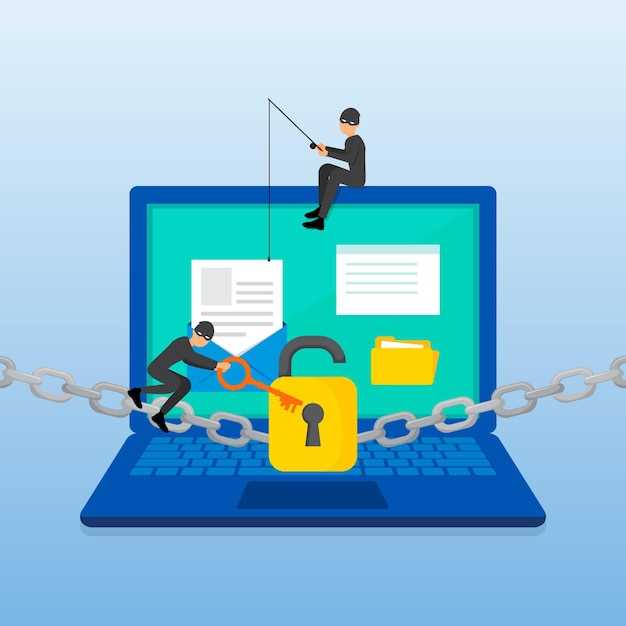
In today’s increasingly interconnected digital world, safeguarding sensitive information is of paramount importance, especially when it comes to government contracts. With the ever-growing threats of cyber-attacks and data breaches, it is crucial for government agencies and contractors to implement robust measures to protect classified data. In this article, we explore a vital aspect of this security framework – the significance of CAGE Codes in safeguarding classified government contract data.
While most people may not be familiar with the term CAGE Codes, these unique identifiers play a fundamental role in facilitating secure communication and data transmission between government agencies and their contracted partners. CAGE Codes, also known as Commercial and Government Entity Codes, serve as exclusive identifiers for government contractors, suppliers, and organizations involved in federal procurement processes. They are assigned by the Defense Logistics Agency and assist in tracking, categorizing, and managing contracts.
However, the significance of CAGE Codes goes far beyond mere administrative purposes. These codes act as gatekeepers, enabling access to valuable and often sensitive information. By linking CAGE Codes to cybersecurity protocols and best practices, the government aims to ensure the protection and integrity of classified data shared during the course of government contracts, fostering a secure environment for collaboration between contractors and agencies.
Understanding the significance of CAGE Codes in government contracting
In the realm of government contracting, there exists a crucial element that plays a pivotal role in facilitating the process – CAGE Codes. These unique identifiers hold great significance and contribute to the smooth functioning of government contracts, ensuring transparency and accountability. Understanding the importance of CAGE Codes is vital for all those involved in government contracting, as it enables them to navigate the complexities of the system and adhere to the necessary regulations.
At its core, a CAGE Code acts as a means to classify and identify organizations that engage in government contracting activities. It serves as a distinctive marker, denoting the capabilities, location, and ownership details of a specific entity. By assigning a CAGE Code to an organization, the government can establish a reliable system for identifying and organizing contractors, providing a streamlined approach when it comes to procurement and supply chain management.
- Enhanced Efficiency: The utilization of CAGE Codes promotes efficiency within the government contracting process. It enables the government to access pertinent information about contractors promptly, negating the need for extensive manual searches.
- Effective Vendor Management: CAGE Codes aid the government in effectively managing vendors and contractors. By having a standardized code, the government can easily track and verify the integrity and reliability of the organizations they engage with.
- Regulatory Compliance: CAGE Codes ensure compliance with various governmental regulations and policies. They allow the government to monitor and enforce essential requirements, such as cybersecurity protocols, obtaining the necessary clearances, and meeting legal obligations.
- Transparency and Accountability: CAGE Codes promote transparency and accountability by providing a standardized framework for documenting and tracking government contract activities. This helps prevent fraud, streamline audits, and ensure that taxpayer funds are spent appropriately.
As the government continues to rely on contracted organizations to fulfill various requirements, understanding the significance of CAGE Codes becomes increasingly crucial. These codes not only establish a robust and organized system but also contribute to the overall integrity and success of government contracting endeavors.
The Role of CAGE Codes in Safeguarding Sensitive Government Procurement Information
In the realm of protecting classified government contract data, an integral component plays a pivotal role – the unique identification system known as CAGE Codes. These codes, synonymous with ensuring the security of government procurement information, serve as indispensable tools in safeguarding sensitive data against unauthorized access and potential cyber threats.
Every government contract data holds immense value and demands the highest level of protection from prying eyes. CAGE Codes, acting as vital gatekeepers, erect formidable barriers to deter potential breaches and unauthorized disclosures. They establish a multi-layered defense mechanism aimed at ensuring that only authorized entities possess access to sensitive government contract data, thereby mitigating the risks of cyber attacks and information leaks.
CAGE Codes serve as a linchpin in the wider framework of cybersecurity measures employed within the government procurement landscape. By assigning a unique identification code to each contractor, these codes facilitate effective monitoring and verification of authorized entities involved in government contracts. This systematic approach aids in preventing data breaches, fortifying cybersecurity measures, and ensuring the integrity of government procurement information.
To further enhance the protection of government contract data, CAGE Codes are intricately integrated into secure networks and databases. System administrators utilize these codes in conjunction with robust encryption algorithms, access controls, and regular audits, thereby creating a comprehensive security infrastructure that effectively safeguards sensitive information from external threats.
The role of CAGE Codes extends beyond the technical realm, as these codes contribute to cultivating a culture of awareness and responsibility within the government contracting community. Contractors are increasingly cognizant of their obligations to uphold stringent cybersecurity practices, which include the careful handling and transmission of classified data. The enforcement of CAGE Codes highlights the importance of diligent adherence to established protocols, reinforcing the significance of safeguarding government contract data.
In conclusion, CAGE Codes hold an indispensable role in protecting government contract data from potential cyber threats. By serving as a gatekeeper, facilitating effective monitoring, and fostering a culture of cybersecurity awareness, these codes bolster the resilience of government procurement frameworks and provide robust defense mechanisms to safeguard sensitive information.
How CAGE Codes ensure the security and confidentiality of classified information
In the realm of classified information, ensuring its security and maintaining its confidentiality are of paramount importance. The utilization of CAGE Codes is a crucial aspect in safeguarding such sensitive data, guaranteeing that it remains protected from unauthorized access and potential breaches.
Preserving Data Integrity
One of the key mechanisms by which CAGE Codes contribute to the security of classified information is through the preservation of data integrity. By assigning unique identification codes to government contractors, CAGE Codes create a system that allows for strict control and tracking of classified data throughout its lifecycle. This systematic approach enables the government to verify the authenticity and reliability of the information, ensuring that only authorized individuals or entities have access to it.
Elevating Confidentiality Measures
Additionally, CAGE Codes serve as a means to enhance confidentiality measures surrounding classified information. By employing these codes, government agencies can establish stringent protocols and procedures to determine who can access or modify specific data sets. This level of granular control minimizes the risk of unauthorized disclosures and helps to maintain the confidentiality of classified information. Furthermore, CAGE Codes enable the establishment of effective auditing processes, which allow for thorough monitoring and investigating any potential breaches or security incidents.
| Incorporating Multi-Factor Authentication | Implementing Robust Encryption |
|---|---|
| Another crucial element of how CAGE Codes contribute to the security and confidentiality of classified information is by incorporating multi-factor authentication. This authentication process adds an extra layer of protection by requiring users to provide multiple verification factors, such as passwords, biometrics, or security tokens. This helps prevent unauthorized access by ensuring that only authorized personnel with the proper authentication factors can access classified data. | In addition to multi-factor authentication, robust encryption techniques play a significant role in safeguarding classified information. CAGE Codes promote the utilization of encryption algorithms to encode sensitive data, making it unreadable to unauthorized parties. This encryption acts as a vital safeguard, even in the event of a breach, as the encrypted information remains unintelligible without the encryption keys. |
In summary, the implementation of CAGE Codes plays a crucial role in ensuring the security and confidentiality of classified information. By preserving data integrity, elevating confidentiality measures, and incorporating multi-factor authentication and robust encryption techniques, CAGE Codes contribute to bolstering the protection of sensitive government data from potential cyber threats and unauthorized access.
Implementing Cybersecurity Measures for CAGE Codes
Enhancing the security of sensitive information is crucial for the protection of valuable data and ensuring the integrity of government contracts. In this section, we will explore the effective implementation of robust cybersecurity measures specifically tailored for the safeguarding of CAGE codes.
Understanding the Significance of Cybersecurity
Given the omnipresent threat of cyberattacks, implementing strong cybersecurity measures becomes paramount. These measures are designed to safeguard sensitive information, prevent unauthorized access and minimize the risk of data breaches. When it comes to CAGE codes, which play a critical role in government contracts, incorporating robust cybersecurity practices is essential to maintain the confidentiality and integrity of classified data.
Securing CAGE Codes through Multi-Factor Authentication
One of the primary steps in fortifying the cybersecurity defense of CAGE codes is by implementing multi-factor authentication (MFA). MFA is an advanced security measure that requires users to provide multiple forms of identification to gain access to sensitive information. By combining passwords with additional authentication factors such as biometrics or one-time verification codes, MFA significantly reduces the risk of unauthorized access to CAGE codes.
Furthermore, organizations must also enforce policies that promote regular password updates and impose stringent complexity requirements to enhance the overall security of CAGE codes.
To protect against potential insider threats and unauthorized access attempts, it is crucial to regularly review access controls and privileges associated with CAGE codes. Implementing a strong user access management system and conducting periodic audits will help identify any vulnerabilities and ensure that only authorized individuals have the necessary permissions to access sensitive data.
Additionally, the implementation of encryption techniques is vital to safeguard the confidentiality and integrity of CAGE codes. Encrypting data both at rest and in transit ensures that even if unauthorized access occurs, the information remains encrypted and indecipherable.
In conclusion, implementing robust cybersecurity measures for the protection of CAGE codes is essential to prevent data breaches and unauthorized access. By incorporating multi-factor authentication, enforcing strict password policies, conducting regular access control reviews, and utilizing encryption techniques, organizations can significantly enhance the security of classified government contract data associated with CAGE codes.
Steps to safeguard classified government contract data from cyber threats
In order to protect sensitive government contract information from cyber threats, it is essential to implement a comprehensive set of measures that ensure the data’s security and integrity. This section outlines key steps that can be taken to safeguard classified government contract data from potential cyber attacks.
1. Implement robust access controls
One of the fundamental steps in safeguarding classified government contract data is to implement stringent access controls. This involves carefully managing user privileges and granting access to the data only to authorized individuals. By limiting access to a need-to-know basis, the risk of unauthorized exposure or tampering can be significantly reduced.
2. Regularly update and patch systems
Another critical step is to ensure that all systems and software used to store and process government contract data are regularly updated with the latest security patches. Cyber threats are constantly evolving, and outdated software can leave vulnerabilities open to exploitation. By promptly applying updates and patches, organizations can stay ahead of potential threats and mitigate the risk of data breaches.
| Step | Description |
|---|---|
| 1 | Implement robust access controls |
| 2 | Regularly update and patch systems |
These are just a few key steps that can be taken to safeguard classified government contract data from cyber threats. Additional measures might include encryption of data at rest and in transit, implementing secure authentication mechanisms, conducting regular security audits, and providing comprehensive cybersecurity training for personnel handling such sensitive information. By adopting a proactive and holistic approach to cybersecurity, organizations can ensure the protection of classified government contract data from potential cyber threats.
Potential Vulnerabilities of CAGE Codes in the Digital Age
In today’s interconnected digital landscape, with the increasing reliance on technology and online platforms, the use of CAGE Codes presents potential vulnerabilities that need to be addressed. These vulnerabilities can lead to unauthorized access, data breaches, and compromise of sensitive government contract information.
The Challenge of Data Protection
One of the main challenges in protecting CAGE Codes in the digital age is ensuring the confidentiality, integrity, and availability of the data associated with these codes. As technology advances, so do the techniques and methods used by cybercriminals to exploit vulnerabilities in systems and networks. This puts CAGE Codes at risk of being targeted for unauthorized access, theft, or manipulation.
The Risk of Social Engineering Attacks
Another potential vulnerability lies in the realm of social engineering attacks, where hackers exploit human psychology to gain unauthorized access to classified government contract data. These attacks can involve manipulation, deception, and impersonation, making it crucial for organizations to have proper training and awareness programs in place to mitigate such risks.
The exploitation of vulnerabilities in CAGE Codes can have severe consequences, such as the compromise of national security, financial losses, and damage to the reputation of both government agencies and contractors involved. Thus, it is imperative for organizations to prioritize cybersecurity measures and remain vigilant in safeguarding their CAGE Code-related data.
Disclaimer: This article is for informational purposes only and does not constitute legal or professional advice.
Examining the risks associated with cyberattacks on CAGE Codes and ways to mitigate them
In this section, we will delve into the various vulnerabilities that exist when it comes to cyberattacks targeting CAGE Codes, and explore effective strategies to minimize these risks. As technology advances, so do the tactics of malicious actors aiming to compromise sensitive information and gain unauthorized access to classified government contract data. It is crucial to acknowledge the potential consequences of such attacks and take proactive measures to safeguard our critical systems.
Understanding the Threat Landscape
When it comes to the realm of cybersecurity, it is important to have a comprehensive understanding of the ever-evolving threat landscape. Cyberattacks targeting CAGE Codes can have far-reaching consequences, leading to the compromise of classified data, financial loss, reputational damage, and even national security implications. These attacks can come in various forms, including phishing, malware infections, ransomware, and insider threats. Each of these poses unique risks and requires distinct mitigation strategies.
Mitigating Risks and Enhancing Resilience
Given the high stakes involved in protecting classified government contract data, it is imperative to implement robust mitigation measures to defend against cyberattacks. Proactive approaches such as regular security assessments, employee training and awareness programs, and the deployment of advanced threat detection systems play a crucial role in mitigating risks. Additionally, implementing multi-factor authentication, encrypting sensitive data, and establishing secure network architectures are key steps to enhance resilience against cyber threats.
An effective incident response plan is also vital to minimize the impact of an attack and ensure prompt recovery. This includes establishing clear protocols for reporting incidents, conducting forensic investigations, and regularly reviewing and updating security policies and procedures to stay ahead of emerging threats. Furthermore, collaboration and information sharing among government agencies and contractors can enhance collective defense and help mitigate risks associated with cyberattacks on CAGE Codes.
In conclusion, the risks associated with cyberattacks on CAGE Codes are significant, and it is essential to acknowledge these vulnerabilities and take proactive measures to minimize them. By understanding the threat landscape, implementing robust mitigation strategies, and fostering collaboration, we can enhance the security and resilience of classified government contract data, safeguarding critical information from malicious actors.
The Importance of Regular Audits for CAGE Codes
A critical aspect of ensuring the integrity and security of classified contracts in the government sector involves conducting regular audits for CAGE Codes. These audits play a vital role in safeguarding sensitive information and maintaining compliance with stringent regulations.
Enhancing Data Protection
Regular audits serve as an essential tool in enhancing data protection for government contracts. By thoroughly reviewing and scrutinizing CAGE Codes, organizations can identify and address potential vulnerabilities and weaknesses in their systems and processes. Such audits provide the opportunity to detect any unauthorized access or potential breaches, allowing for prompt remediation actions to be taken.
Maintaining Compliance and Accountability
Regular audits for CAGE Codes play a crucial role in maintaining compliance with regulatory requirements and ensuring accountability within government contract data management. These audits help organizations demonstrate their commitment to following established protocols and safeguarding classified information. By conducting periodic assessments, organizations can identify any non-compliance issues, rectify them promptly, and ensure that their systems and processes align with industry standards.
In conclusion, the significance of conducting regular audits for CAGE Codes cannot be overstated when it comes to protecting classified government contract data. These audits support the enhancement of data protection measures and contribute to maintaining compliance and accountability within the government sector, ultimately safeguarding sensitive information from potential threats.



